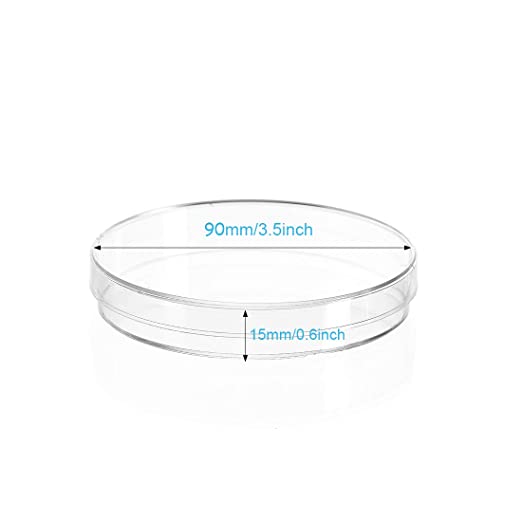Know the Sizes and Diameters of These Common Tools
They are usually made of glass or plastic and have a flat bottom and shallow bowl-shaped sides. These plates can vary greatly in size depending on their intended use. Generally, Petri dishes are between 35mm and 150mm in diameter; however other sizes are available such as 60mm, 70mm, 90mm, 100mm and 110mm 120mm.
Transparent petri dishes are growing in popularity because they allow researchers to view biological samples under magnification without removing them from the dish. Additionally, many modern Petri dishes come with lids for convenient storage when not in use. This is especially useful to prevent contamination during experiments involving multiple cultures or species grown simultaneously on different plates.

When selecting a Petri dish for your experiment, it is important to consider the size and diameter of the Petri dish you will need based on the scope of your project requirements. Smaller petris may be better suited for growing smaller organisms, while larger petris may be better suited for growing larger specimens or performing more complex experiments requiring more space between cultures within one plate. Beyond that, you should also consider any specific requirements regarding temperature control, as certain materials will require special handling if grown at temperatures outside the ideal range – which is sometimes not the case when using standard sized Petris possible due to the limited surface area of smaller plates..
 In summary, it’s clear that knowing the size and diameter of a Petri dish is an important part of choosing the right container for any lab-based experiment involving biological samples or cultures—whether these are clear or the opaque variety with a lid. By considering factors such as sample volume, temperature control needs, desired observations (transparency), and more, scientists can ensure they choose the right size plate that will provide the optimal conditions required for their particular project, ensuring a successful outcome!
In summary, it’s clear that knowing the size and diameter of a Petri dish is an important part of choosing the right container for any lab-based experiment involving biological samples or cultures—whether these are clear or the opaque variety with a lid. By considering factors such as sample volume, temperature control needs, desired observations (transparency), and more, scientists can ensure they choose the right size plate that will provide the optimal conditions required for their particular project, ensuring a successful outcome!